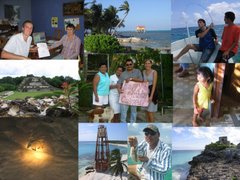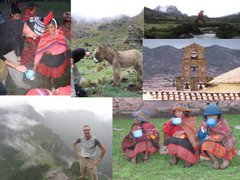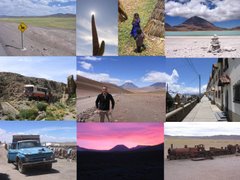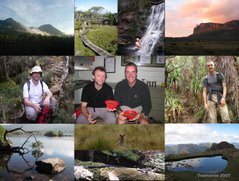
There's so much going on in the battle against poverty just now, including a couple of particularly innovative ideas that have come across my radar - 10 to the Hundredth, and Blog Action Day. Read on to find out more.
As part of Google's 10th birthday celebrations - must surely be the wealthiest 10 year old in the world - they have put out a "call for ideas to change the world by helping as many people as possible."
(http://www.project10tothe100.com/intl/EN_GB/index.html).
My colleague Stephen and I can't think of a much better idea than SEWA Ashram, and we've put together the following application. With a bit of good fortune, we hope we will be one of the 100-strong shortlist. Expect a very excited post here, with a link to our youtube video (being put together as we speak) if that happens!
(http://www.project10tothe100.com/intl/EN_GB/index.html).
My colleague Stephen and I can't think of a much better idea than SEWA Ashram, and we've put together the following application. With a bit of good fortune, we hope we will be one of the 100-strong shortlist. Expect a very excited post here, with a link to our youtube video (being put together as we speak) if that happens!
What one sentence best describes your idea?
To provide shelter, healing, education and training to the most destitute in society through a new form of community that will become a model for rehabilitating the extreme poor.
To provide shelter, healing, education and training to the most destitute in society through a new form of community that will become a model for rehabilitating the extreme poor.
Describe your idea in more depth.
Two hours north of Delhi, SEWA Ashram is a small volunteer-run community that for the past 8 years has provided shelter and healthcare to destitute individuals who have been found on the streets of Delhi, abandoned by society. It’s budget is $4 a day. But many of those who are helped fall back into destitution, as they have no skills or opportunities to integrate themselves into society when they leave the Ashram.
The current Ashram can only house up to 150 individuals so with a larger site and the introduction of education, training projects and microfinance, SEWA Ashram plans to extend the work it does to truly re-connect the most destitute into society. It will grow its community to around 750 people.
This project would build a bridge between the most destitute, excluded individuals, and one of the most innovative developments in the not-for-profit sector in the last 30 years: microfinance. By providing shelter, healthcare, training and – ultimately – microfinance opportunities in one community, this project could provide a model for rehabilitating the most destitute.
The aspiration for SEWA Ashram community is to provide a model of society in miniature, tackling many social issues we face today. As such, this idea could equally fulfil any one of the 10^100 categories:
- It provides shelter and healthcare to the sick, through loving, non-judgemental treatment. One in ten current patients have HIV, and around 50% have TB.
- Through education and livelihood projects, it provides individuals with the capability to help themselves.
- As a purpose-built community it provides a platform for clean energy solutions. Through its scalability across the world’s second largest country and beyond, the implications for the environment could be profound.
But most of all, this idea is about community. A community is literally built for those who have none.
What problem or issue does your idea address?
Javed was born 33 years ago. His family home was made of mud and grass. His father left the family when he was 3 months old. He seldom had clothes and was always hungry. He ‘left home’ at eight, jumped trains and begged until he was 13.
Eventually he escaped to Delhi, where he lived under a flyover for 5 years. Uneducated of the dangers, he contracted HIV through his drug use.
When Sewa Ashram found Javed, he had infected wounds, TB and was seriously ill. He was in a coma for 8 days. After hospital, Javed came to the Sewa Ashram. The early days were difficult.
The Ashram gave Javed the chance of a new life. This project gives more people that chance.
If your idea were to become a reality, who would benefit the most and how?
It will benefit the most destitute in society; those – like Javed – whos’ lives have been tougher than we can imagine, lacking hope, love and opportunity. Many of the poorest are capable of doing much to help themselves and others. Sewa Ashram encourages this capability.
However, it is not just those who are helped who will gain from this project. This project gives all of us the opportunity to understand our fundamental similarities, and explore how we can overcome society’s most intractable problems.
Javed grew whilst in the care of the Ashram and discovered a talent for painting, which provides him some income. He met and married Jyoti, another Sewa Ashram patient. They have now adopted Jyoti’s 14 year old niece.
Javed still leads a life that most people would shudder at. But for him, he has “made it”.
Our idea is to make more stories like Javed’s a reality.
What are the initial steps required to get this idea off the ground?
- a draft detailed business plan has already been developed for a community village for the destitute that will provide a financially and environmentally sustainable solution to the problem of the destitute homeless in Delhi. It’s feasibility needs assessing.
- this village will be built on a site outside Delhi, incorporating medical services, family homes, school buildings, livelihood training projects as well as other community initiatives. This will cater for a community of 750 people and will cost an estimated US$3m for the initial 12 month period.
- 12 months after the Ashram launch, the community acts as an inspiration and model for communities across India and other countries.
Describe the optimal outcome should your idea be selected and successfully implemented. How would you measure it?
With the support of the 10^100 project, we will develop an innovative and cost-effective solution to the problem of extreme poverty in urban India.
Impact is not measured simply by the number of people helped, but by whether and how their lives have been transformed and the sustainability of the solution.
The project mission will be to take the homeless, impoverished and sick, and heal them, give them shelter and ultimately give them the capability to move forward with their lives and become part of society again. We would measure success by the numbers of people who successfully complete this process.
Success will be measured by meeting people like Javed and listening to their stories on how they “made it”.
This posting was created for Blog Action Day 2008.








